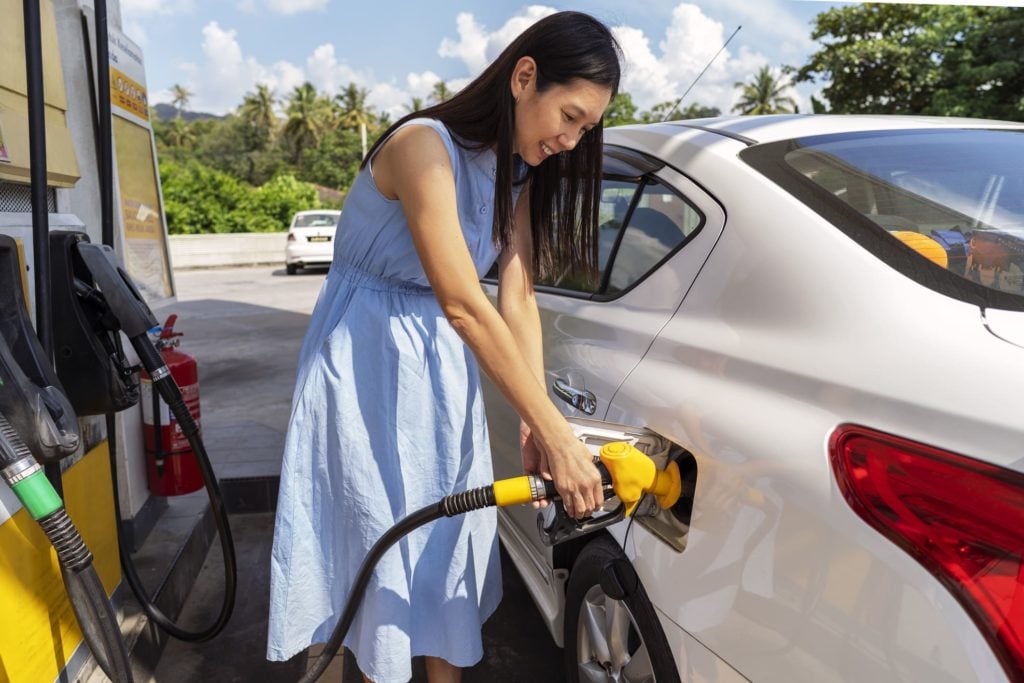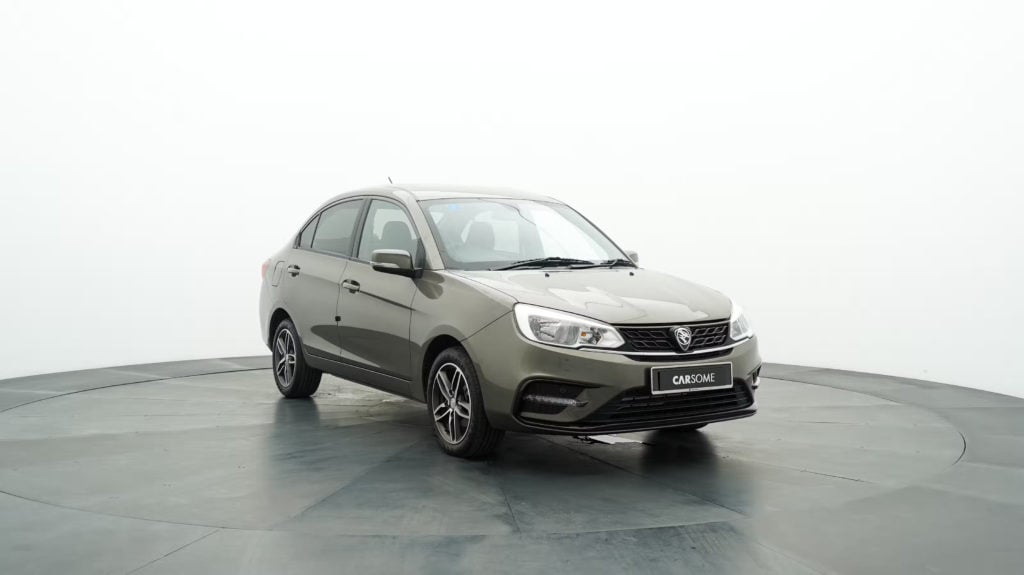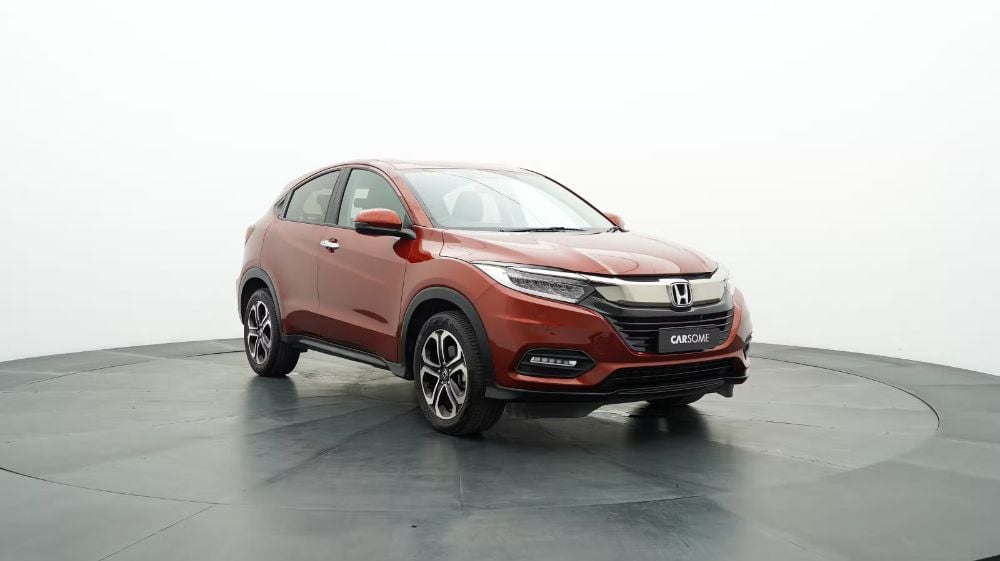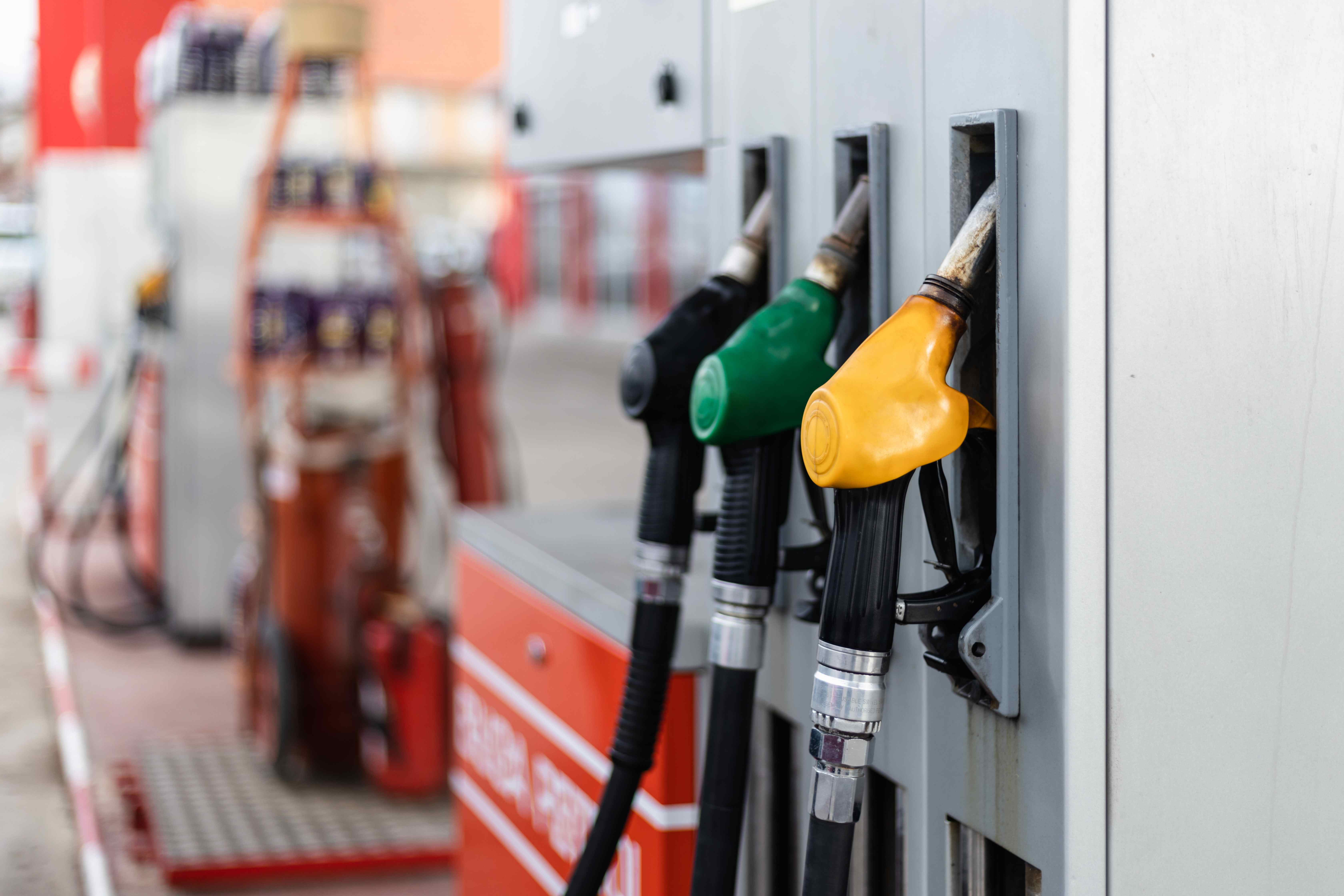Currently, oil prices are close to its five-year high as a result of numerous factors including geopolitical tensions. This has translated into rising fuel prices at the pump around the world.
In case you’re wondering, our neighbors in Thailand are indeed paying roughly RM5 for a liter of RON95 petrol, or 38.25 baht per liter (at the time of writing).
That’s because Thailand is not a major oil producer, and thus petrol prices closely follow market prices. On the other hand, Malaysia is a major oil-producing and exporting country. So, it stands to follow that Malaysia’s economy should do better when global oil prices are high, right? Well, the situation is a little tricky since Malaysia subsidizes petrol and diesel for its people.
The Malaysian Fuel Subsidy Explained
Fuel prices at Malaysian pumps are among the lowest in the world, thanks to a generous petrol and diesel subsidy scheme.
The government subsidizes RON95 petrol and diesel, while RON97 petrol is unsubsidized. The petrol price at the pump is calculated using the Automatic Pricing Mechanism (APM), a managed float system that, in theory, should change every week as it follows the market price of crude oil.
To give an idea of the petrol and diesel prices in Malaysia without subsidy and just how much the government is subsidizing our fuel, let’s look at the table below:
| Fuel | Price at the pump per liter (RM) | Market price per liter (RM est.) | Government subsidy per liter (RM est.) |
| RON95 | 2.05 | 3.05 | 1.00 |
| Diesel | 2.15 | 3.75 | 1.60 |
| RON97 | 4.00 | 4.00 | 0.00 |
*Unsubsidized price of RON95 as of May 2023 cited here and price of diesel as of October 2023 cited here.
Read More: How to Calculate Petrol Price in Malaysia
Malaysians Lose When Oil Prices are High?
There have been discussions about whether to change or end the fuel subsidy scheme.
Firstly, the fuel subsidy in Malaysia is an untargeted subsidy scheme, meaning that everyone enjoys the subsidy regardless of whether they are rich or poor. Take a look at these two drivers:
- Lisa drives a Mercedes-Benz C200. Every time she goes to the petrol station, she fills 50 liters of RON95 at RM2.05 per liter. She does this four times a month as she commutes to work and goes to shopping malls. In a month, she pays RM410 at the pump, while the government pays RM200 in subsidy.
- Jane drives a Perodua Axia. Every time she goes to the petrol station, she fills 20 liters of RON95 at RM2.05 per liter. She does this twice a month as she mainly uses public transport, plus she has a smaller car. In a month, she pays RM82 at the pump, while the government pays RM40 in subsidy.

With this, we can see that those who drive bigger cars enjoy more fuel subsidies than those who drive less. A targeted subsidy was to be implemented on 1 January 2020 to curb this inefficiency, but it was shelved due to the COVID-19 pandemic.
Secondly, the subsidy is costing Malaysia more money every time oil prices rise – money which can be put towards other, beneficial projects. According to a CGS-CIMB research report and The Star in 2022, it is estimated that for every US$1 (RM4.18) per barrel average increase in oil prices, it will cost the government around RM780 million in fuel subsidies (based on the price of RON95 petrol and diesel at RM2.05 and RM2.15 per liter respectively).
That cost would realistically be higher now, especially with the value of the Malaysian Ringgit declining against the US Dollar in 2023.
Deputy Finance Minister Datuk Seri Ahmad Maslan has said that the government spent more than RM50 billion on fuel subsidies in 2023, with the subsidies being enjoyed by all Malaysians including high earners.
Read More: Busting Popular Car Myths Part 1: Separating Fact from Fiction on Fuel Consumption
Will the Fuel Subsidy End? What Can You Do About It?
The government has announced that diesel subsidies will be restructured in 2024 but the current subsidies for RON95 petrol will remain, at least in the short term – this means we still get to enjoy petrol and diesel prices that are lower than the actual market rate.
Government Announced Targeted Diesel Subsidy from 2024
While tabling Budget 2024, the Prime Minister announced that the government will restructure the diesel subsidies in Malaysia in phases to prevent leakages and smuggling of diesel. However, he assured that selected segments including logistics companies and fishermen will continue to enjoy diesel subsidies to reduce the impact on the prices of goods.
While the current subsidies for RON95 petrol will remain, it is unsustainable and will most likely be restructured in the coming years. Indonesia, another major oil producer, bit the bullet and reformed its fuel subsidy program in 2015. It has used the money saved on subsidies to focus on other forms of social protection and infrastructure development.
Furthermore, as the world moves from fossil fuels to renewables, ending fuel subsidies will also encourage people to drive less or use more eco-friendly cars. Low fuel prices are something we can’t enjoy forever, and we could end up paying RM5 or even RM6 for a liter of RON95 petrol in the near future, as our Thai neighbors do now.
Tips You Can Use to Save Fuel
Fuel prices might go up eventually but we’re not completely helpless when it comes to improving our fuel economy. Here are some tips you can follow to save fuel and do your part for the environment.
Maintain Your Car Regularly
Regular maintenance helps a lot with saving fuel. A well-maintained engine works more efficiently and can get the most power out of a given amount of fuel. On the other hand, a poorly maintained engine will build up sludge and corrosion, making it difficult for the engine to work properly.
Read More: How to Take Care of Your Car & Why You Should
Check Your Tire Pressure
Underinflated tires will have more rolling resistance, leading to increased fuel consumption. A United States Department of Energy study showed that for every 1 pound per square inch (psi) drop in pressure, you can expect your mileage to lower by 0.4 percent. Underinflated tires can also lead to uneven tire wear and even pose a safety risk.
Read More: What You Need to Know About Car Tires
Drive Smoothly
By avoiding sudden acceleration and braking, you can improve your fuel efficiency. Hard movements are inefficient on the engine, not to mention dangerous for other road users. To improve your smoothness on the road, practice defensive driving techniques that may also save your life.
Choose an Energy Efficient Vehicle (EEV)
In Malaysia, EEVs are vehicles that meet a set of specifications for carbon dioxide emissions (gCO2/km) and fuel consumption (L/100km). This standard includes conventional petrol/diesel vehicles, hybrids, as well as electric vehicles.
Currently, many popular models on the road are EEVs, including:
1. Perodua Axia

The Perodua Axia is the king of fuel parsimony. With a 1.0-liter engine and a featherweight body of 860 to 890 kg, Perodua claims a fuel efficiency of 21.6 kilometers per liter (km/ L). It’s a popular choice for city commuters due to its small size and fuel frugality.
2. Proton Saga

The nation’s favorite sedan, the Proton Saga is a favored choice for those traveling long distances due to its boot space and stability at highway speeds. Its 1.3-liter engine, paired with a Hyundai-sourced four-speed automatic gearbox achieves a claimed fuel efficiency of 15 km/ L.
3. Honda HR-V

The Honda HR-V is an example of a sports utility vehicle (SUV) that’s also an EEV. Honda claims a fuel efficiency of 15.1 km/ L, helped by features like cruise control, Econ mode, and a sleek aerodynamic design. With the 2022 Honda HR-V e:HEV RS hybrid model, Honda claims the fuel efficiency is more than 20 km/ L.
Focus & Drive Safe with CARSOME
At CARSOME, we are committed to leaving the world a better place than we found it – and that includes saving the environment by helping you to save fuel. We carry a large range of EEVs to aid you in your petrol-saving journey. By getting a pre-owned car, you are also helping to save the environment by giving a perfectly good car a new lease of life.
Furthermore, every CARSOME Certified car is thoroughly inspected and curated with our stringent 175-point inspection to ensure the car is free from major accidents, mileage tampering, as well as frame, fire, or flood damage. It also undergoes a full, professional refurbishment at our CARSOME Certified Lab where we condition and maintain the engine for peak efficiency.
Furthermore, every CARSOME Certified car includes:
- A five-day money-back guarantee in case you change your mind.
- A one-year warranty to ensure further peace of mind.
Choose your dream ride at carsome.my or download our app today.
This content was originally published on 22/3/2022. It has been updated for freshness, accuracy, and comprehensiveness.
